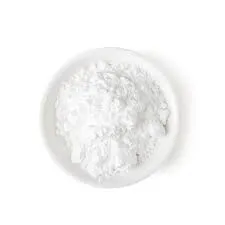Exploring the Chemistry of C6H10O4 A Dive into Dicarboxylic Acids
C6H10O4 is the molecular formula that represents a compound known as adipic acid or a related dicarboxylic acid. These organic compounds are significant in the world of chemistry, materials science, and industrial applications. Dicarboxylic acids, characterized by the presence of two carboxyl functional groups (-COOH), are known for their versatile reactivity and wide usage in various fields.
.
The presence of two carboxyl groups in adipic acid allows it to participate in a diverse array of chemical reactions, which is a focus of study for chemists. For instance, the acid can be utilized in esterification reactions, where it forms esters with alcohol, leading to valuable compounds used in fragrances, solvents, and plasticizers. Moreover, adipic acid can undergo polymerization, giving rise to various polyamides and polyesters that are vital in manufacturing engineering plastics, packaging materials, and automotive components.
c6h10o4

One of the notable applications of C6H10O4 is in the production of nylon-6,6, which is derived from the condensation polymerization of adipic acid and hexamethylenediamine. This synthetic process yields materials that boast significant strength, durability, and resistance to abrasion. As a result, nylon-6,6 finds numerous applications in textiles, ropes, automotive parts, and more, illustrating the importance of C6H10O4 in everyday life.
Furthermore, adipic acid also plays a vital role in the food industry. With its ability to act as an acidity regulator, it is sometimes used in food processing to ensure that certain products maintain a stable pH. This functionality contributes to the preservation of flavors and nutritional quality, demonstrating that dicarboxylic acids like C6H10O4 can have an impact beyond industrial applications.
In addition to its applications, the environmental implications of producing and using C6H10O4 have become a focal point in recent years. As industries strive to reduce their carbon footprint, sustainable methods of synthesis, such as biosynthesis from renewable sources, are being explored. Researchers are investigating biological processes that can convert biomass into dicarboxylic acids, thereby providing a greener alternative to traditional petrochemical methods. This shift aims to minimize environmental impact while meeting the global demand for polymers, fibers, and other materials.
In conclusion, C6H10O4, embodied primarily by adipic acid, is a compound that showcases the intersection of organic chemistry and practical applications. Its dicarboxylic structure endows it with unique properties that are essential in various industrial sectors, particularly in the production of nylon and other synthetic materials. As we move forward, the ability to innovate around its synthesis and applications will not only drive industrial advancements but also foster sustainable practices that embrace environmental stewardship. The journey of C6H10O4 from a simple molecular formula to its critical role in modern society illustrates the importance of chemistry in shaping our world and addressing future challenges.

